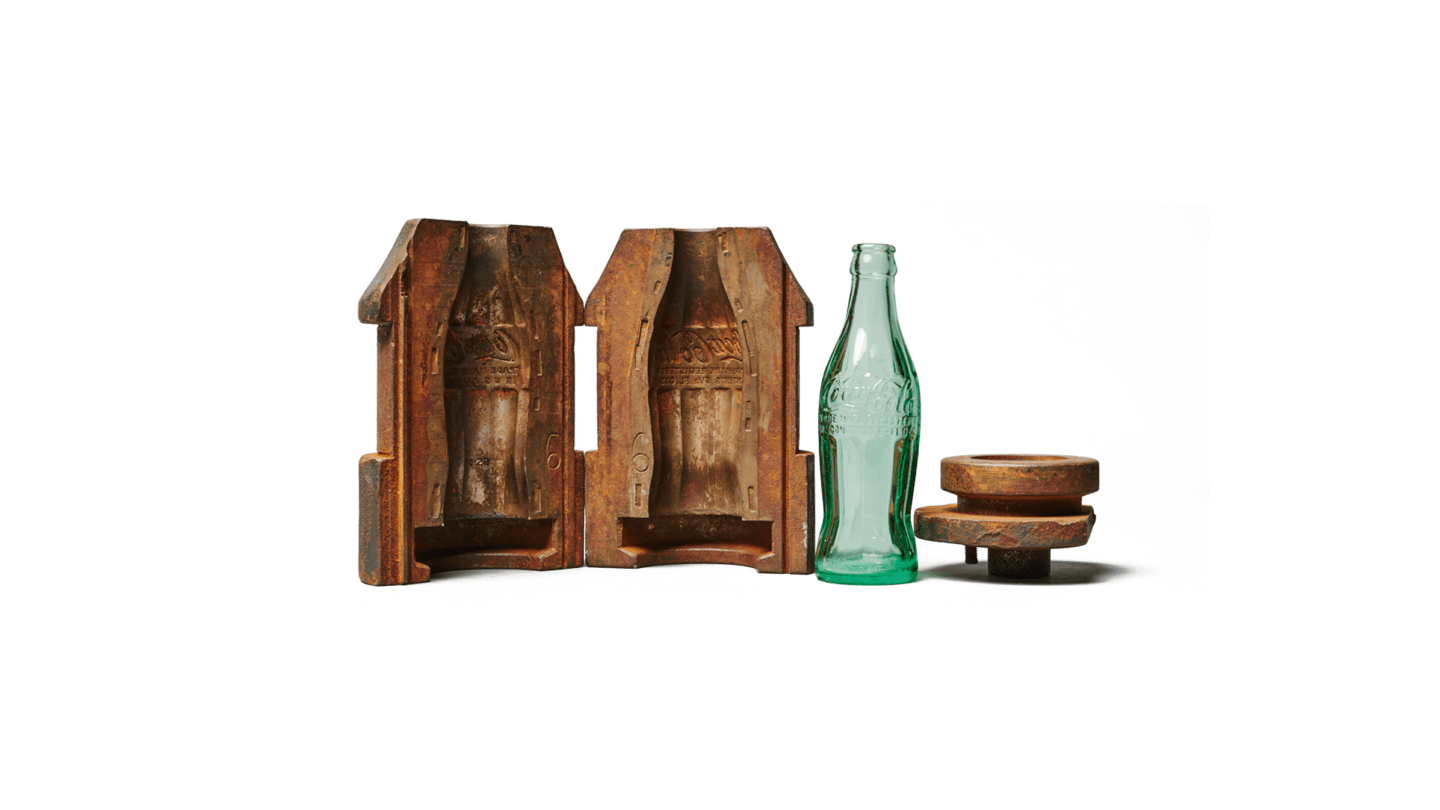
In 1912, lawyer Harold Hirsch issued a call to glass companies across the U.S. to develop a product that was:
“. . .so distinct that you would recognize it by feel in the dark or laying broken on the ground.”
He was talking, of course, about the now-iconic Coca-Cola hobble skirt bottle.
The Root Glass Company in Indiana designed the prototype bottle in 1916 to look like a hybrid of the drink’s two ingredients—the coca leaf and the kola nut. Designers hadn’t actually seen either of the ingredients in person, so they used a cocoa pod as inspiration.
Coca-Cola and Root Glass entered an agreement to have six glass manufacturers across the U.S. use the bottle shape. Originally, the contract called for all bottles to be colored with “Georgia Green,” an homage to the drink’s Atlanta origins.
In 1950, Time magazine approached Coca-Cola CEO Robert Woodruff to ask if he would appear on the cover. Woodruff declined, insisting that the bottle itself be the star. It was the first commercial product to appear on the cover of Time Magazine.
The magazine appearance solidified Atlanta’s own Coca-Cola as a global brand and made the bottle’s design ubiquitous. “Coke” is used colloquially as a generic term for sodas and has appeared in film, television, radio, and every form of printed media. In his 1975 book, The Philosophy of Andy Warhol, Warhol—who is known for his incorporation of the Coke silhouette in his work—describes the impact of the Atlanta brand on the world:
“What’s great about this country is that America started the tradition where the richest consumers buy essentially the same things as the poorest. You can be watching TV and see Coca-Cola, and you know that the president drinks Coke, Liz Taylor drinks Coke, and just think, you can drink Coke, too. A Coke is a Coke and no amount of money can get you a better Coke than the one the bum on the corner is drinking. All the Cokes are the same and all the Cokes are good. Liz Taylor knows it, the president knows it, the bum knows it, and you know it.”
Want to learn more about the pause that refreshes? Our friends over at the Coca-Cola Archives took us through a behind the scenes tour of their collection. You can also read more about Coke and the 49 other facets that make our city unique at our virtual exhibition, Atlanta in 50 Objects.